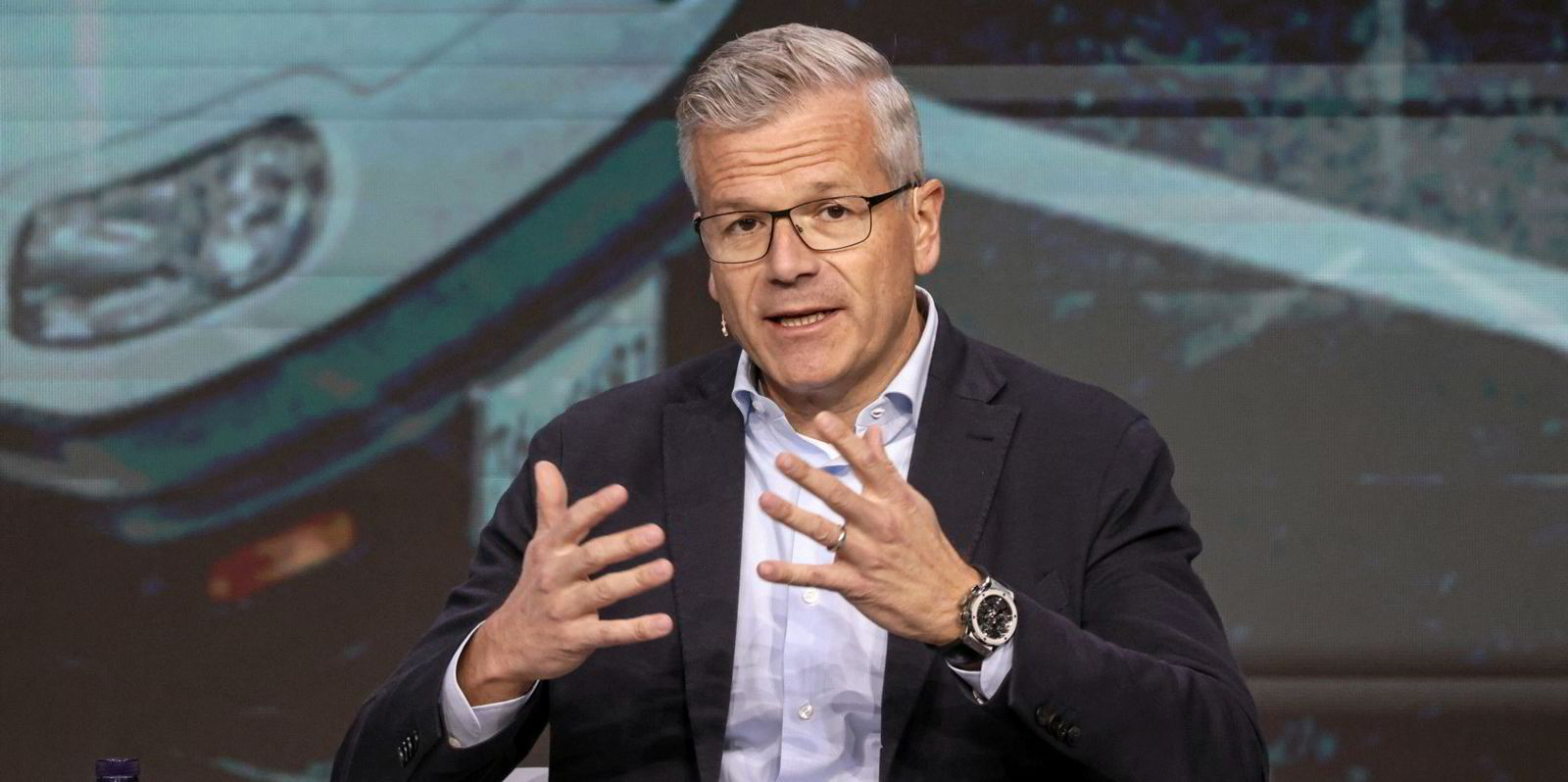Remember that talk of a ‘new paradigm’ for container shipping during and after the Covid-19 pandemic lockdowns? When congestion was holding up ships in the East and West, driving freight rates to record highs as work-from-homers snapped up desks and garden furniture?
That seems a long time ago now, doesn’t it?
There is little evidence today to support the talk from both inside and outside the liner business about it moving away from its historic failure to earn a return on capital to a position of greater strength, control and stability.
And if business is looking tough in mid-2023, then the outlook for the next few years is bleaker still. Falling trade and a record surge in new ship deliveries are set to present major challenges for owners and operators of all sizes.
After the dramatic correction towards the end of last year, which has left freight rates about 80% below their 2022 peak, spot rates are now around the average for the 2010s, according to Clarksons Research.
The charter market has suffered a similar slump, with Braemar’s BOXi index down 76% in the year to the end of June, despite holding broadly steady in the past three months. Analysts have now thankfully stopped talking nonsense about new paradigms, and have reverted to the view that markets have ‘normalised’.
Maersk’s results for the second quarter of this year, which were published last week, provided a clear picture of how far markets have fallen, with profit down to $1.5bn from $8.6bn in the same period of 2022, and revenues nearly halved at $13bn from $21.6bn.
Now the world’s second-largest line — after being overtaken by MSC Mediterranean Shipping Company — Maersk offered a glimmer of hope to the market with a modest upgrade of its full-year earnings guidance. But this is down to its own internal controls rather than the underlying market.
“Cost focus will continue to play a central role in dealing with a subdued market outlook that we expect to continue until the end of the year,” Maersk chief executive Vincent Clerc said.
Alarm bells were rung by Maersk’s warning that global box volumes are forecast to fall in the range of -4% to -1% compared with -2.5% to +0.5% as previously thought. This implies that Maersk’s fleet could shrink, as the company expects its ocean division to grow in line with the market.
“We are in the midst of the biggest correction after the Covid boom of 2021 and 2022,” he told The Financial Times. “It’s always difficult to handle such a radical change in demand ... There is quite a significant orderbook that will be phased in.
“This is likely to create a difficult trading outlook. We expect a continued correction on earnings.”
The causes of the expected shrinkage in container volumes hardly need repeating. Inflation fuelled by lockdown spending and the energy price spike caused by the war in Ukraine has forced central banks worldwide to hike interest rates further and faster than most observers expected.
And while analysts will argue over the detail of the likely landing zones for the world’s leading economies, the overall impact is suppressed demand.
All this comes just as the biggest container ship newbuilding delivery surge in history is about to hit the water. Deliveries in the first half of this year were already a record, with 2.3m teu capacity due for delivery in 2023 overall, with another 2.9m teu expected in 2024, according to Braemar.
That would be an all-time high, more than double the annual deliveries between 2007 and 2015.
“The supply side rolls on relentlessly and has no regard for the bearish demand picture,” Braemar said. Net fleet growth will be 7.9% this year and 8.4% in 2024.
The consequences of this wall of fresh steel will likely drive faster physical and operational change.
It is likely to be a key driver for the demolition of older units, although there have been a few demo deals that owners have proved reluctant to scrap at scale so far.
Ships are already sailing more slowly and may slow further. Speeds are down 3% so far this year, according to Clarksons.
Impacts on environmental policies will also take the edge off fleet growth, crimping it by 1.5 to 2% in 2023/2024, with slower speeds and retrofits to comply with Carbon Intensity Indicator and Energy Efficiency Existing Ship Index rules.
“These impacts are unlikely to transform weaker boxship markets alone, given the scale of expected deliveries and ongoing demand-side pressure,” Clarksons said.
Despite the prospects of a difficult 24 months ahead, major companies such as Maersk are in much better shape than before any similar downturn.
The huge congestion-induced cash windfall has enabled them to pay down debt and invest in new systems and products.
Shares will come under pressure. Fearnley Securities has a “sell” recommendation on Maersk as its shares are trading at 40-times year-forward earnings compared with a multiple of 13 times in 2009 to 2019.
A lack of debt and greater market control give the major lines a new position of power. But, once again, the market is going to test their skill and resolve.




